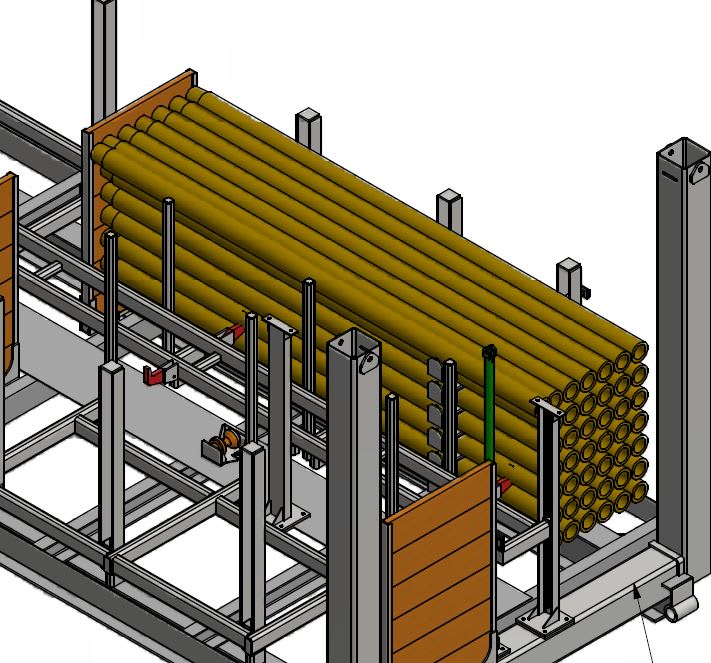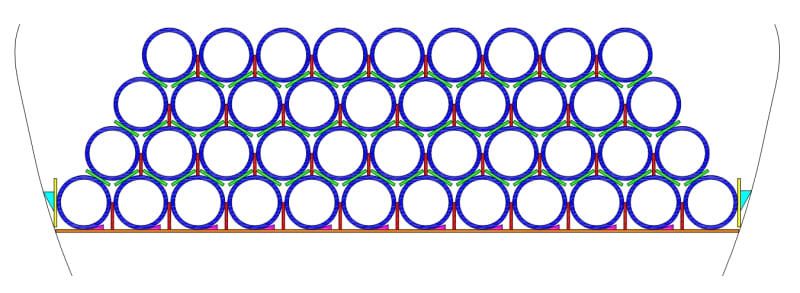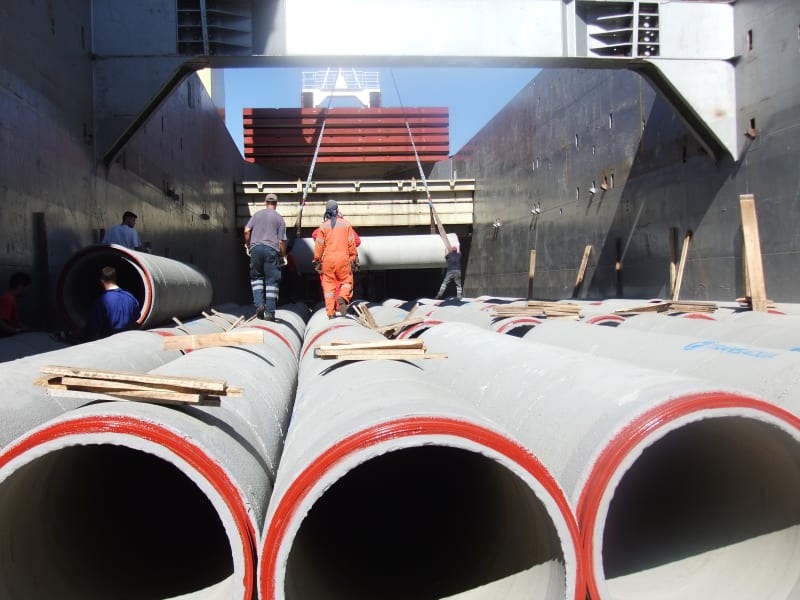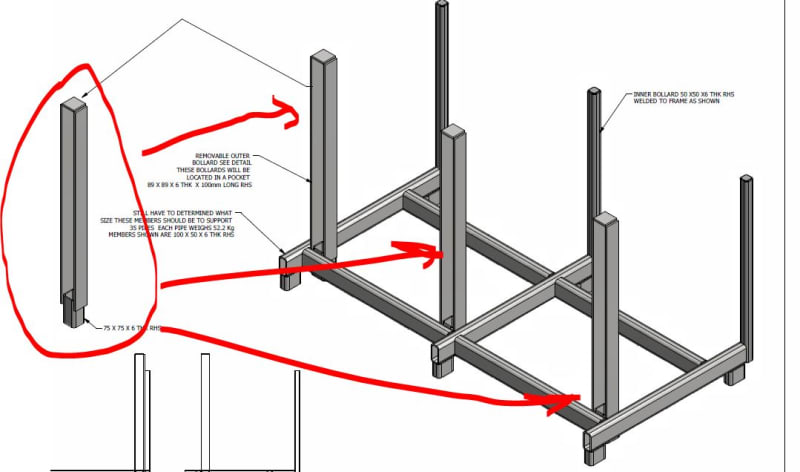I have a situation where some pipes need to be stacked 7 rows high by 6 pipes across. Each pipe weighs approx 50kg.
They're stacked on top of each other. Now if this container held soil or water the loads to the uprights would be easy to calculate but in this case I'm unsure how to proceed.
Obviously if the supports were t0 be removed the pipe stack would collapse. It follows that there is a horizontal component of the load at some point on the uprights. Again if this were soil or water there would be a triangular distribution and the centroid of the load would be 1/3 up from the base. From there it would be easy to calculate the moment.
Can anyone here help? Thanks in advance.

They're stacked on top of each other. Now if this container held soil or water the loads to the uprights would be easy to calculate but in this case I'm unsure how to proceed.
Obviously if the supports were t0 be removed the pipe stack would collapse. It follows that there is a horizontal component of the load at some point on the uprights. Again if this were soil or water there would be a triangular distribution and the centroid of the load would be 1/3 up from the base. From there it would be easy to calculate the moment.
Can anyone here help? Thanks in advance.





![[idea] [idea] [idea]](/data/assets/smilies/idea.gif)

